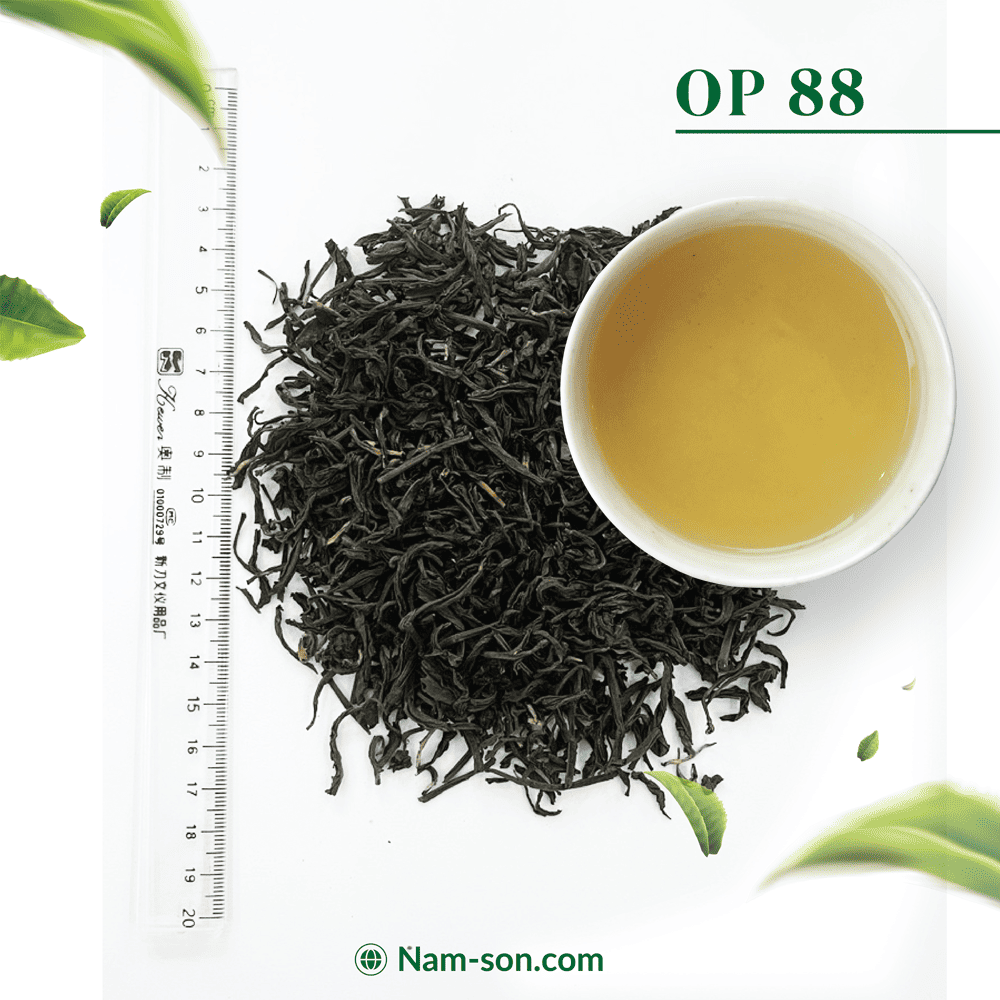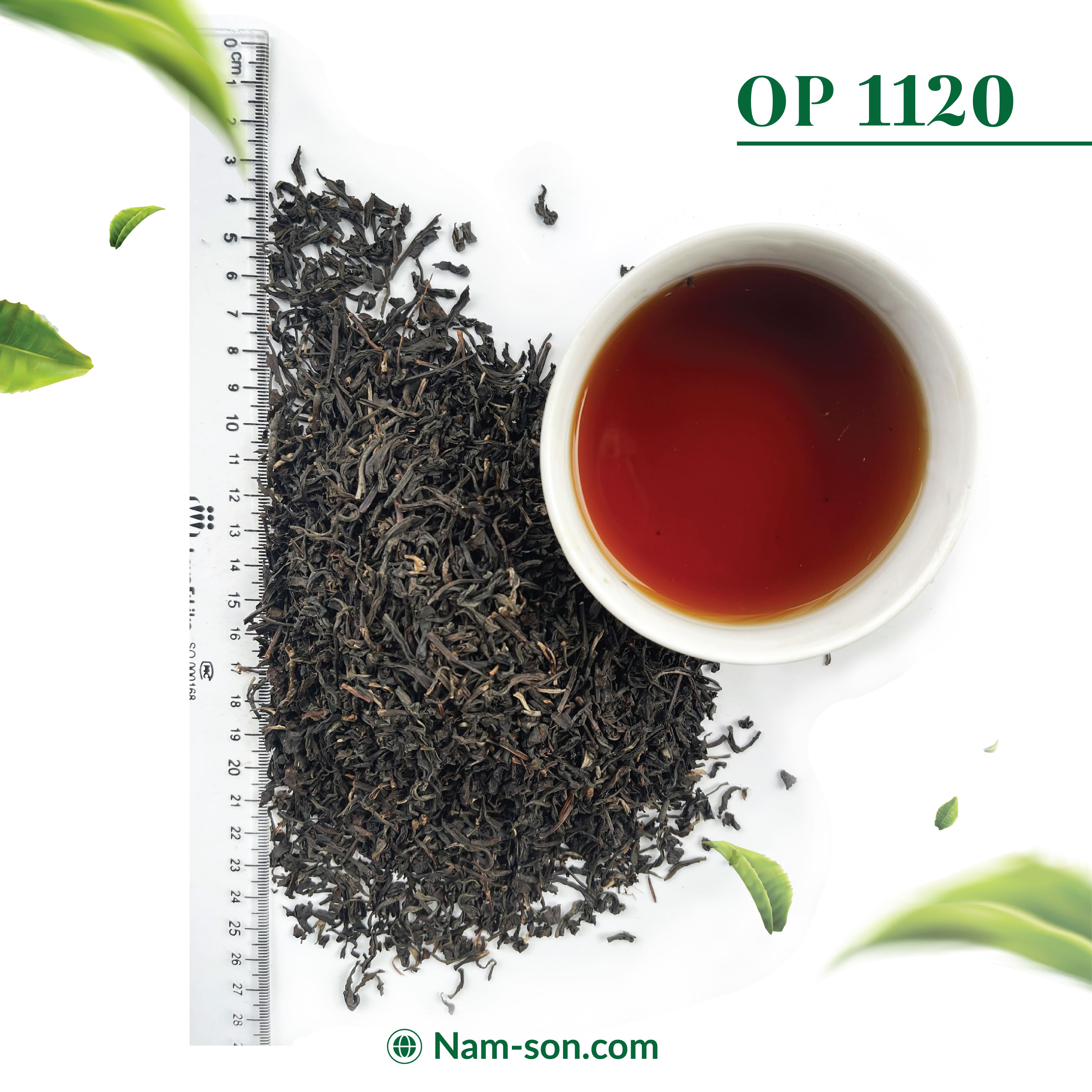In the global tea industry, Green Tea OP (Orange Pekoe) and Black Tea OP are two highly valued product lines, recognized for their quality and diverse applications. Although both belong to the “OP – Orange Pekoe” grade (referring to teas made from young, carefully plucked long leaves), they differ significantly in processing methods, flavor, nutritional content, and consumer preferences.
Understanding these differences is essential not only for tea lovers but also for importers, distributors, and international tea brands when developing product portfolios tailored to specific markets.
- Raw Materials and Processing Methods
- Green Tea OP:
 Made from young, tender leaves, carefully plucked to preserve their long, elegant shape.
Made from young, tender leaves, carefully plucked to preserve their long, elegant shape.- After harvesting, the leaves are steamed or pan-fired at high temperatures to halt oxidation, preserving their natural green color.
- The focus of processing is to retain the fresh, delicate flavors of the tea leaves.
- Black Tea OP:
 Also made from young leaves but goes through more complex steps: withering – rolling – full oxidation – drying.
Also made from young leaves but goes through more complex steps: withering – rolling – full oxidation – drying.- Oxidation triggers chemical transformations that give the tea its deep reddish liquor, robust flavor, and rich aroma.
- This process is the key factor that sets Black Tea OP apart from Green Tea OP.
- Flavor and Liquor Appearance
- Green Tea OP:
- Liquor: Light yellow-green or golden-green, clear and bright.
- Flavor: Refreshing, slightly astringent but smooth, with a subtle sweet aftertaste.
- Experience: Ideal for those who prefer a light, refined, and relaxing tea.
- Black Tea OP:
- Liquor: Amber-red to dark reddish-brown, rich and glowing.
- Flavor: Bold, layered, and full-bodied, with hints of natural sweetness or spice.
- Experience: Suitable for direct consumption, or as a base for milk tea, tea bags, and specialty tea blends.
- Caffeine Content and Health Benefits
- Green Tea OP:
- Contains less caffeine than black tea.
- Rich in catechins and EGCG – powerful antioxidants that help slow aging, protect cells, and support weight management.
- Gentle enough for daily consumption without causing restlessness or insomnia.
- Black Tea OP:
- Higher in caffeine, providing stronger alertness and sustained focus.
- Rich in theaflavins and thearubigins – compounds formed during oxidation, known to support heart health, digestion, and cholesterol reduction.
- A good choice for those who need energy and concentration.
- Consumer Markets and Applications
- Green Tea OP:
- Popular in Asian countries such as Japan, China, and Vietnam, where green tea plays a central role in culture and daily life.
- Often used in premium loose-leaf products, as well as scented teas (e.g., jasmine or lotus green tea), aimed at refined, health-conscious markets.
- Black Tea OP:
- Widely consumed in Europe, the Middle East, and Africa, where people prefer strong teas often enjoyed with milk or sugar.
- Extensively used in tea bags, milk tea, instant tea, and modern beverage formulations due to its fast infusion and bold flavor.
While both originate from the same young tea leaves, Green Tea OP and Black Tea OP represent two very different identities. Green tea emphasizes freshness and delicacy, while black tea stands out for its strength, richness, and versatility.
The choice between the two depends largely on consumer preferences and product strategies. This is why importers and distributors often choose to include both in their portfolios to cover different customer segments.
Nam Son – A leading producer and exporter of Green Tea OP and Black Tea OP from Vietnam. With internationally standardized production, large-scale supply capacity, and flexible OEM/ODM services, we deliver optimal solutions for global distributors and tea brands.

 Made from young, tender leaves, carefully plucked to preserve their long, elegant shape.
Made from young, tender leaves, carefully plucked to preserve their long, elegant shape. Also made from young leaves but goes through more complex steps: withering – rolling – full oxidation – drying.
Also made from young leaves but goes through more complex steps: withering – rolling – full oxidation – drying.